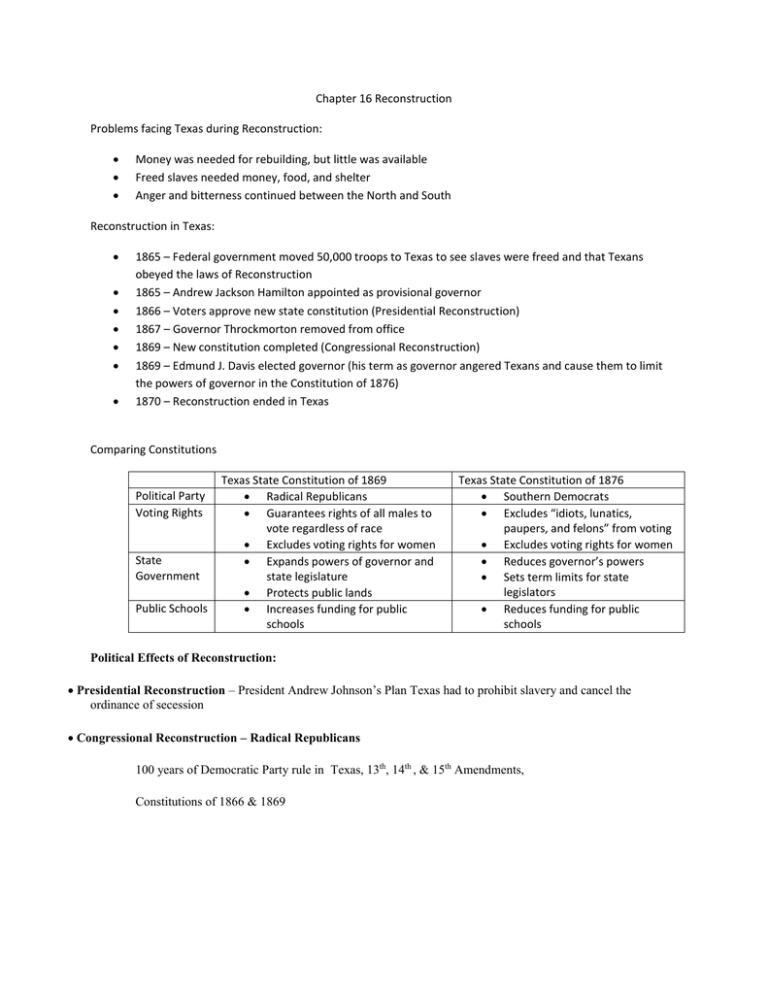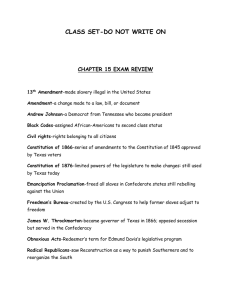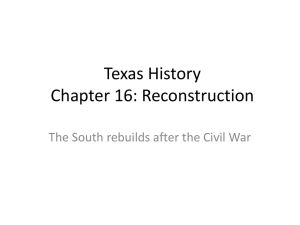Chapter 16 Reconstruction Problems facing Texas during
advertisement

Chapter 16 Reconstruction Problems facing Texas during Reconstruction: Money was needed for rebuilding, but little was available Freed slaves needed money, food, and shelter Anger and bitterness continued between the North and South Reconstruction in Texas: 1865 – Federal government moved 50,000 troops to Texas to see slaves were freed and that Texans obeyed the laws of Reconstruction 1865 – Andrew Jackson Hamilton appointed as provisional governor 1866 – Voters approve new state constitution (Presidential Reconstruction) 1867 – Governor Throckmorton removed from office 1869 – New constitution completed (Congressional Reconstruction) 1869 – Edmund J. Davis elected governor (his term as governor angered Texans and cause them to limit the powers of governor in the Constitution of 1876) 1870 – Reconstruction ended in Texas Comparing Constitutions Political Party Voting Rights State Government Public Schools Texas State Constitution of 1869 Radical Republicans Guarantees rights of all males to vote regardless of race Excludes voting rights for women Expands powers of governor and state legislature Protects public lands Increases funding for public schools Texas State Constitution of 1876 Southern Democrats Excludes “idiots, lunatics, paupers, and felons” from voting Excludes voting rights for women Reduces governor’s powers Sets term limits for state legislators Reduces funding for public schools Political Effects of Reconstruction: Presidential Reconstruction – President Andrew Johnson’s Plan Texas had to prohibit slavery and cancel the ordinance of secession Congressional Reconstruction – Radical Republicans 100 years of Democratic Party rule in Texas, 13th, 14th , & 15th Amendments, Constitutions of 1866 & 1869 Economic Effects of Reconstruction: Shortage of free labor growth of tenant farming and sharecropping Texas did not suffer as much destruction as other Southern states Social Effects of Reconstruction: June 19th or “Juneteenth” celebrated by freed slaves Freedmen’s Bureau established (founded schools and hospitals for African Americans, distributed food and clothing to the sick, aged and poor, and provided land for former slaves) Jim Crow laws and KKK became features of Southern segregation







